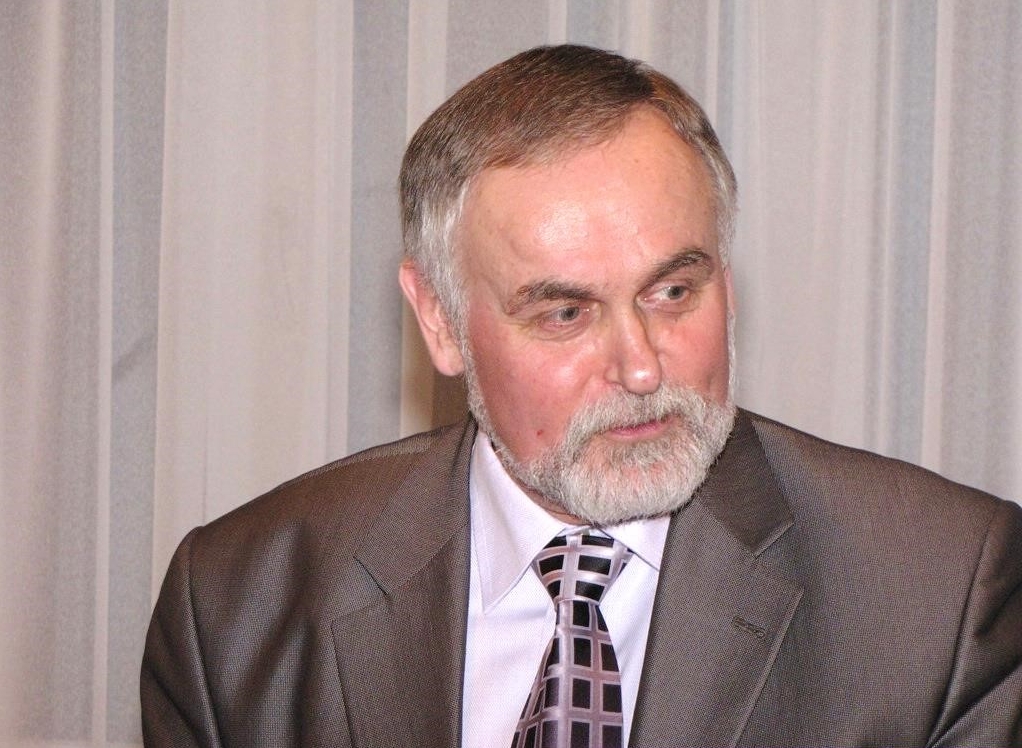Structure
- Home
- Structure
- Scientific Divisions
- Department of Molecular Compound Physics
- Biophysical Research Laboratory
- Structure
- Administration
- Scientific Board
- International Advisory Board
-
Scientific Divisions
- Accredited Corrosion Research Laboratory
- Department of Catalysis
- Department of Characterisation of Materials Structure
- Department of Chemical Engineering and Technology
- Department of Electrochemical Material Science
- Laboratory of Electronic Processes
- Department of Environmental Research
- Department of Functional Materials and Electronics
- Department of Fundamental Research
- Department of Laser Technologies
- Department of Molecular Compound Physics
- Department of Nanoengineering
- Department of Nanotechnology
- Department of Nuclear Research
- Department of Optoelectronics
- Department of Organic Chemistry
- Department of Physical Technologies
- Department of Textile Technologies
Biophysical Research Laboratory
Head of the laboratory prof., habil. dr. Leonas Valkūnas

Absorption of light in molecular compounds results in electronic excitations that can undergo relaxation, migration or, under suitable conditions, even split to electron–hole pairs. These processes are affected by intra- and intermolecular vibrations (phonons) and the environment of the compounds. Coherent molecular vibrations can directly influence the electronic excitation dynamics. Understanding of transfer and relaxation of electronic excitation in variously sized organic molecules might reveal new possibilities to control photoinduced processes in organic nanostructures. Such molecules are important in biology (carotenoids, chlorophylls, retinal) or in the field of molecular electronics (polymers, fullerenes, carbon nanotubes). The mission of Biophysical research laboratory is to identify the relationship between the function of biological and synthetic molecular compounds and the dynamical processes occurring therein, by considering the structure of such systems and their interactions with environment.
There are several research directions in the laboratory. During the last decade, various dynamic phenomena in biophysics, especially the primary photoinduced processes in photosynthesis, have been intensively investigated. Much attention has been paid to ultrafast dynamics of electronic excitations, while recently the problem of the non-photochemical quenching is actively pursued. Another research direction is microscopy of molecular compounds: development of single-molecule spectroscopy approaches that are applied to the conformational dynamics of photosynthetic complexes or DNA molecules, while CARS microscopy is used to identify the molecular compounds that could be used to transport drugs in the organism. Fluorescent probes for viscosity and temperature are also analyzed and developed in the laboratory. This approach is gaining popularity to measure local variations of viscosity or temperature in living cells. To improve the understanding of the origins of the processes under consideration and to obtain the maximum amount of information from the gathered experimental data, the laboratory utilizes and develops various methods for theoretical modelling and data analysis. Finally, laboratory research staff also investigate kinetic phenomena in non-biological nanostructures, such ascarbon nanotubes or perovskite solar cells.
Biophysical modeling research laboratory is open for national and international collaborations and welcomes interested students to join the undergoing research.
- A. Gelzinis, D. Abramavicius, L. Valkunas, Absorption lineshapes of molecular aggregates revisited, J. Chem. Phys. 142, 154107, 2015.
- J. Chmeliov, A. Gelzinis, E. Songaila, R. Augulis, C. D. P. Duffy, A. V. Ruban, L. Valkunas, The nature of self-regulation in photosynthetic light-harvesting antenna, Nat. Plants 2, 16045, 2016.
- J. Chmeliov, J. Narkeliunas, M. W. Graham, G. R. Fleming, L. Valkunas, Exciton–exciton annihilation and relaxation pathways in semiconducting carbon nanotubes, Nanoscale 8, 1618–1626, 2016.
- M. Tutkus, J. Chmeliov, D. Rutkauskas, A. V. Ruban, L. Valkunas, Influence of the carotenoid composition on the conformational dynamics of photosynthetic light-harvesting complexes, J. Phys. Chem. Lett. 8, 5898–5906, 2017.
- A. Gelzinis, D. Abramavicius, J. P. Ogilvie, L. Valkunas, Spectroscopic properties of photosystem II reaction center revisited, J. Chem. Phys. 147, 115102, 2017.
- M. Tutkus, T. Marciulionis, G. Sasnauskas, and D. Rutkauskas, DNA-Endonuclease Complex Dynamics by Simultaneous FRET and Fluorophore Intensity in Evanescent Field, Biophys J. 112, 850–858, 2017.
- S. Farooq, J. Chmeliov, E. Wientjes, R. Koehorst, A. Bader, L. Valkunas, G. Trinkunas, H. van Amerongen, Dynamic feedback of the photosystem II reaction centre on photoprotection in plants, Nat. Plants 4,225–231, 2018.
- A. Gelzinis, R. Augulis, V. Butkus, B. Robert, L. Valkunas, Two-dimensional spectroscopy for non-specialists, Biochim. Biophys. Acta 1860, 271–285, 2019.
- S. Toliautas, J. Dodonova, A. Žvirblis, I. Čiplys, A. Polita, A. Devižis, S. Tumkevičius, J. Šulskus, A. Vyšniauskas, Enhancing the Viscosity-Sensitive Range of a BODIPY Molecular Rotor by Two Orders of Magnitude, Chem.: Eur. J. 25, 10342-10349, 2019.
- A. Dementjev, O. Gnatiuk, D. Rutkauskas, R. Karpicz, M. Tutkus, G. Dovbeshko, Investigation by CARS microscopy of squalene and boron nitride as a precursor material for drug delivery carrier, J. Photochem. Photobiol. 380, 111863, 2019.